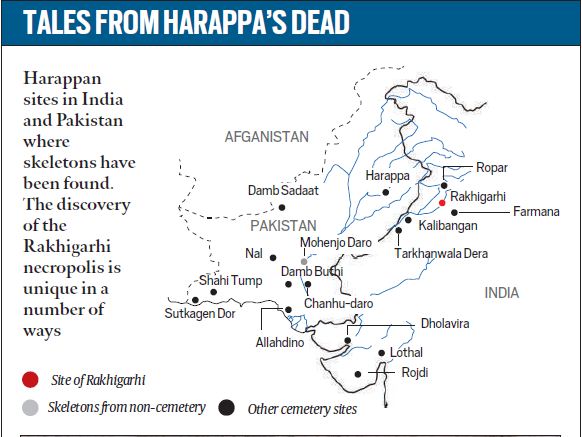7667766266
enquiry@shankarias.in
Why in news?
Near-complete skeletal remains of a young male and female have recently been discovered at an archaeological site in Rakhigarhi village in Haryana.
What was the finding?

What does the site reveal on marriage?
What are the other findings regarding the graves?
Source: The Indian Express